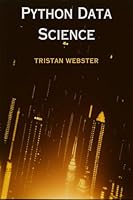
Advanced Computing
- Length: 250 pages
- Edition: 2013
- Language: English
- Publisher: Springer
- Publication Date: 2013-10-31
- ISBN-10: 3642387616
- ISBN-13: 9783642387616
- Sales Rank: #14119336 (See Top 100 Books)
Advanced Computing (Lecture Notes in Computational Science and Engineering)
This proceedings volume collects review articles that summarize research conducted at the Munich Centre of Advanced Computing (MAC) from 2008 to 2012. The articles address the increasing gap between what should be possible in Computational Science and Engineering due to recent advances in algorithms, hardware, and networks, and what can actually be achieved in practice; they also examine novel computing architectures, where computation itself is a multifaceted process, with hardware awareness or ubiquitous parallelism due to many-core systems being just two of the challenges faced. Topics cover both the methodological aspects of advanced computing (algorithms, parallel computing, data exploration, software engineering) and cutting-edge applications from the fields of chemistry, the geosciences, civil and mechanical engineering, etc., reflecting the highly interdisciplinary nature of the Munich Centre of Advanced Computing.
Table of Contents
Chapter 1. A Review of the Finite Cell Method for Nonlinear Structural Analysis of Complex CAD and Image-Based Geometric Models
Chapter 2. Immersed Boundary Methods for Fluid-Structure Interaction and Shape Optimization within an FEM-Based PDE Toolbox
Chapter 3. Numerical Simulation of Transport in Porous Media: Some Problems from Micro to Macro Scale
Chapter 4. Optimal Control of Partially Miscible Two-Phase Flow with Applications to Subsurface CO2 Sequestration
Chapter 5. A Newton-CG Method for Full-Waveform Inversion in a Coupled Solid-Fluid System
Chapter 6. Advances in the Parallelisation of Software for Quantum Chemistry Applications
Chapter 7. Designing Spacecraft High Performance Computing Architectures
Chapter 8. Requirements Engineering for Computational Seismology Software
Chapter 9. A High-Performance Interactive Computing Framework for Engineering Applications
Chapter 10. A Framework for the Interactive Handling of High-Dimensional Simulation Data in Complex Geometries
Chapter 11. Experiences with a Flexibly Reconfigurable Visualization System on Software Development and Workplace Ergonomics







